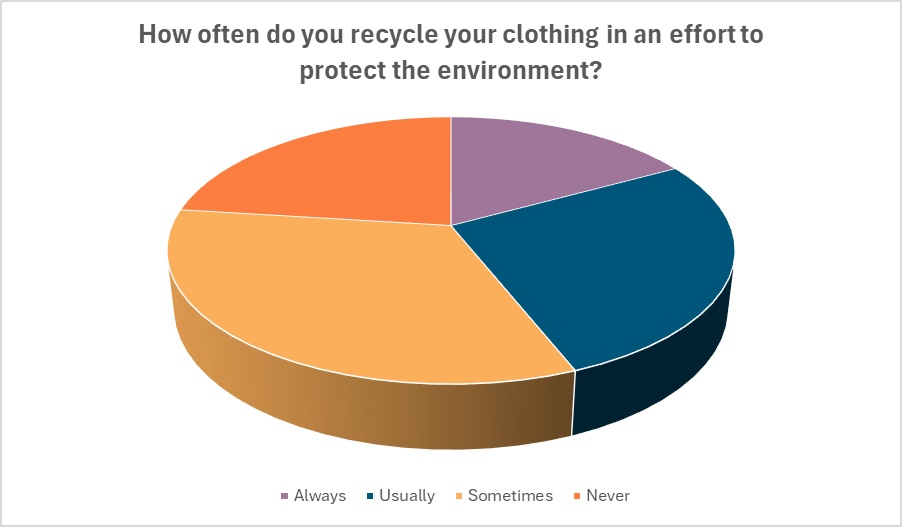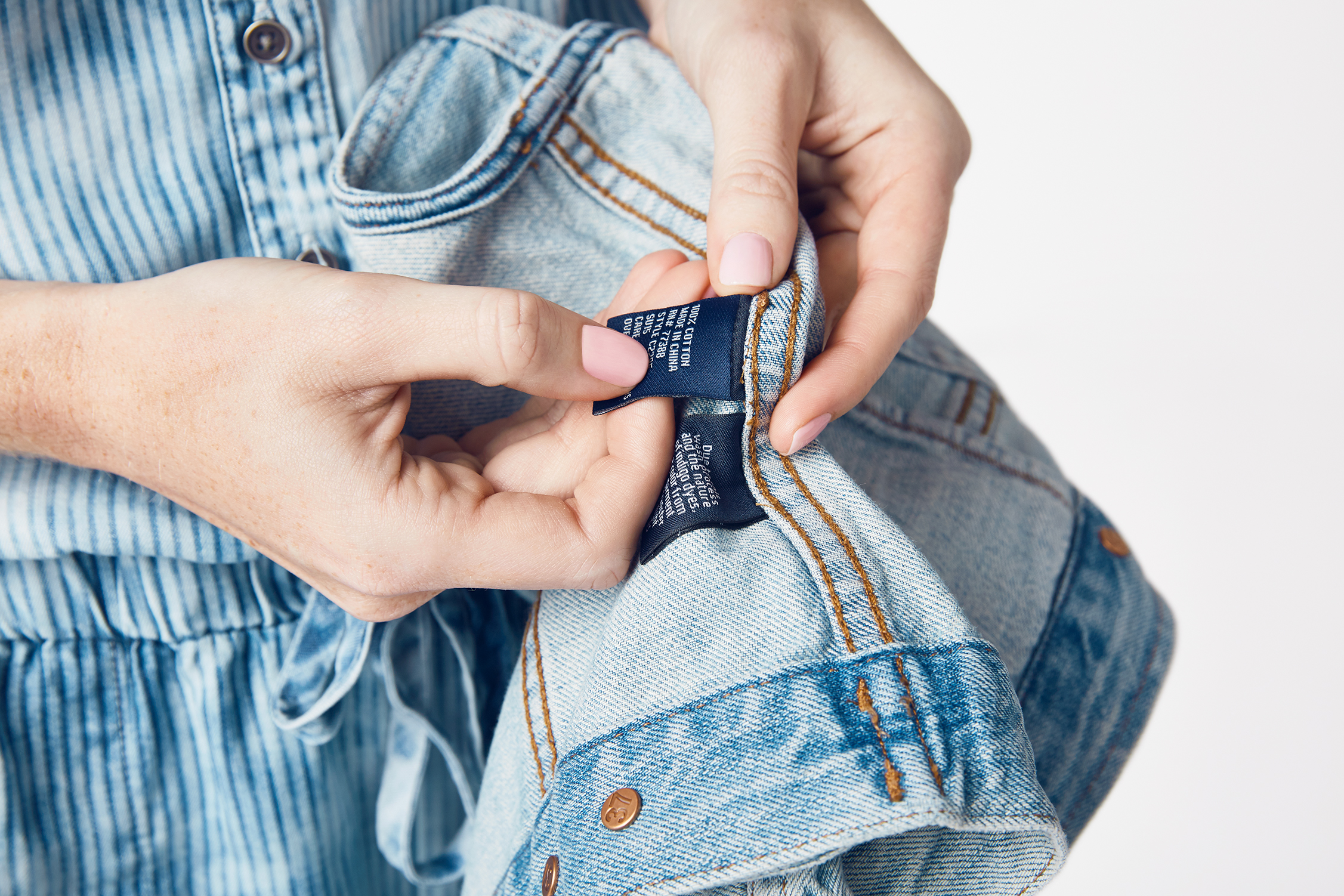America Recycles Day rolls in on November 15 and it stands as a prime occasion to promote the recycling of clothes and textiles.
“Honestly, when most consumers think about recycling, clothing isn’t at the top of their list—it’s bottles, cans, and paper,” said Rachel Kibbe, CEO of Circular Services Group, a circularity and sustainability consultancy, in an interview with the Lifestyle Monitor™. “And that makes sense, because we’re not there yet with textiles. The infrastructure for true clothing recycling, where old garments get transformed into new ones, simply doesn’t exist at scale today for post-consumer apparel. But that’s going to change in the coming years. As circularity continues to gain traction through policy, and investments flow into textile recycling technology, we’re going to see clothing recycling become a reality.”
America Recycles Day serves as a reminder of how crucial textile recycling is for the environment and we encourage everyone to get involved with this easy, impactful program.
Andrea Samber, Director of Brand Partnerships, Cotton Incorporated
The aim of America Recycles Day, an event created by Keep America Beautiful, is to highlight how recycling – whether it’s plastic bottles, aluminum cans, paper, electronics or textiles – keeps tons of materials out of landfills, saves energy and conserves precious resources. Its message: Small actions can lead to big impact.
Nearly 9 out of 10 consumers (87 percent) say in general, they recycle at least sometimes in an effort to protect the environment, according to the Cotton Incorporated 2024 Lifestyle Monitor™ Survey. And 77 percent say they recycle their clothes sometimes (33 percent), usually (27 percent), or always (17 percent) in an effort to care for the environment.

One way retailers, brands and consumers can all help with textile recycling is through Cotton Incorporated’s Blue Jeans Go Green™ denim recycling program. Consumers can turn in worn denim that’s at least 90 percent cotton at a participating retail location and can often get a discount on a new pair of jeans. They can also mail in their denim through Zappos for Good. And students from kindergarten through college can take part in school denim drives.
Andrea Samber, director of brand partnerships for Cotton Incorporated, emphasized the impact of the Blue Jeans Go Green™ program, saying, “Our mission is to give denim a second life, keeping it out of landfills and repurposing it to benefit communities in new ways. Thanks to the natural renewability of authentic denim, your well-loved jeans can transform into products like building insulation, pet bed inserts, thermal packaging and more. America Recycles Day serves as a reminder of how crucial textile recycling is for the environment and we encourage everyone to get involved with this easy, impactful program.”
Samber also highlighted the collaborative power of the program, adding, “With no cost to join, it’s incredibly easy for brands and retailers to get involved, whether through contributing production scraps, recycling non-sellable goods or engaging customers through in-store drop-off promotions. Together as an industry, we can amplify the message of textile recycling and inspire more sustainable choices for a lasting impact.”
The Parlor Room, a Virginia Beach-based women’s clothing store, is a participating retailer in the Blue Jeans Go Green™ program.
“As a clothing store, we are part of an industry that is based around consumption, so we recognize and are excited about any opportunity to minimize our impact on the environment – this is one of the many reasons the Blue Jeans Go Green™ denim recycling program spoke to us,” said The Parlor Room’s Madeline Collins, owner, in an interview with the Lifestyle Monitor™. “We are always seeking ways to be sustainably minded and forward thinking by choosing to work with clothing brands and other programs that are circular, regenerative and renewable.”
Collins agrees with Kibbe that consumers don’t seem to think of recycling clothing as much as other items. But she says the Blue Jeans Go Green™ program is a good step in raising their awareness.
“Our participation in a recycling program has definitely made our shoppers more aware of the possibilities of recycling, and both the local and global impact it can have,” Collins said. “The team at Cotton Incorporated’s Blue Jeans Go Green™ program has been so wonderful to work with, too. They’ve provided us with recycling bins and examples of recycled denim insulation, so that we can start that conversation with our shoppers.”
Programs such as the Blue Jeans Go Green™ program are valuable because, as Kibbe points out, despite all the marketing buzz around circularity, the reality is that most consumers are still sending their clothes to the landfill.
“Data shows that in the U.S., over 85 percent of textiles end up as waste. Even with increased media attention on sustainability, that statistic has barely moved in years,” Kibbe said. “A recent EPA report noted that more than 11 million tons of textiles went to U.S. landfills in 2021 alone.”
In yet another effort to keep cotton garments out of landfills, Cotton Incorporated and North Carolina State University are conducting research into turning worn cotton clothes into glucose, or sugar. Glucose is used in sweets, but it’s also used to produce ethanol, which is a biofuel. Glucose can also be used to produce value-added chemicals such as levulinic acid, succinic acid and lactic acid. Lactic acid is used by the cosmetics industry in hygiene and esthetic products. In the food industry, it’s used in the production of yogurt and cheese. Making these chemicals from discarded cotton textiles could directly decrease greenhouse gas emissions.
For even more change among consumers and the fashion industry itself, Kibbe says policy changes will be necessary.
“To make real progress, we need durable and cohesive carrots, sticks and trade policies that align with circularity goals, support regional and domestic recycling industries, and encourage investment in the infrastructure we lack,” Kibbe said. “If brands are serious about circularity, we’d love for them to engage with us on these policy efforts. Only then will the industry be positioned to fully support recycling on both the consumer and manufacturing sides.”
